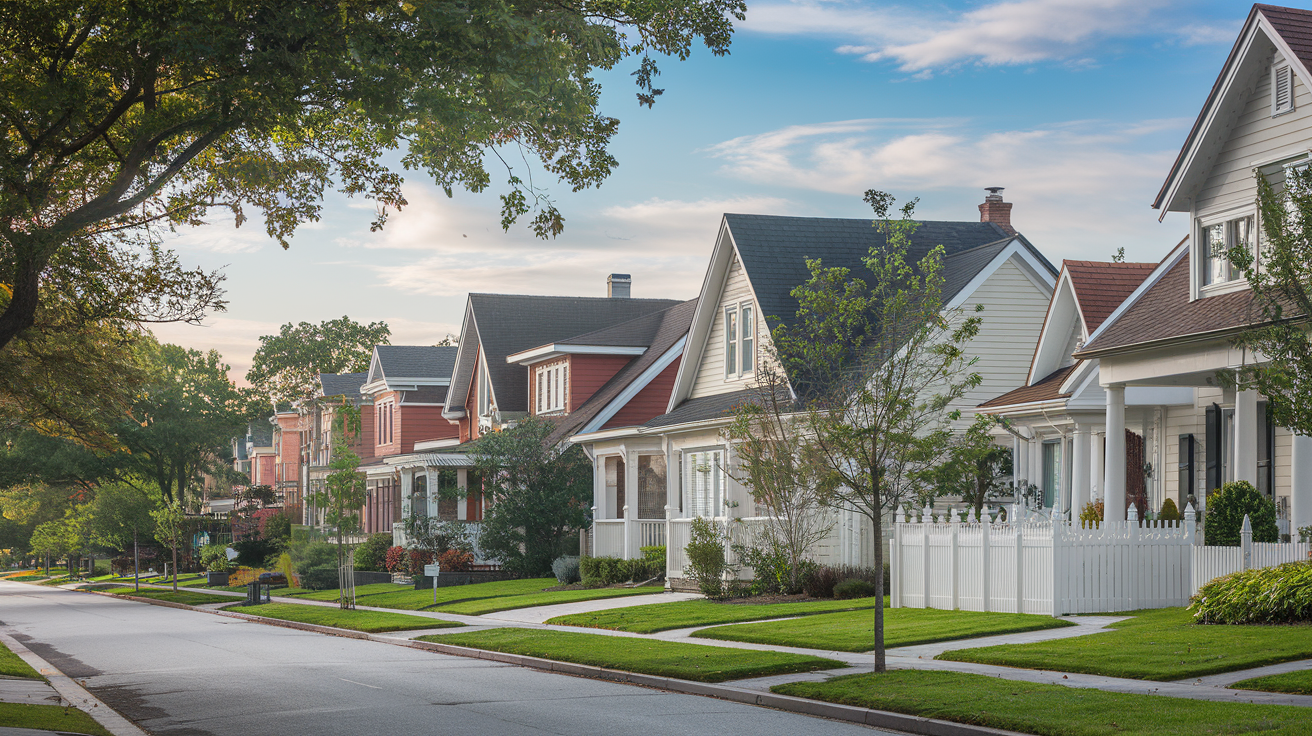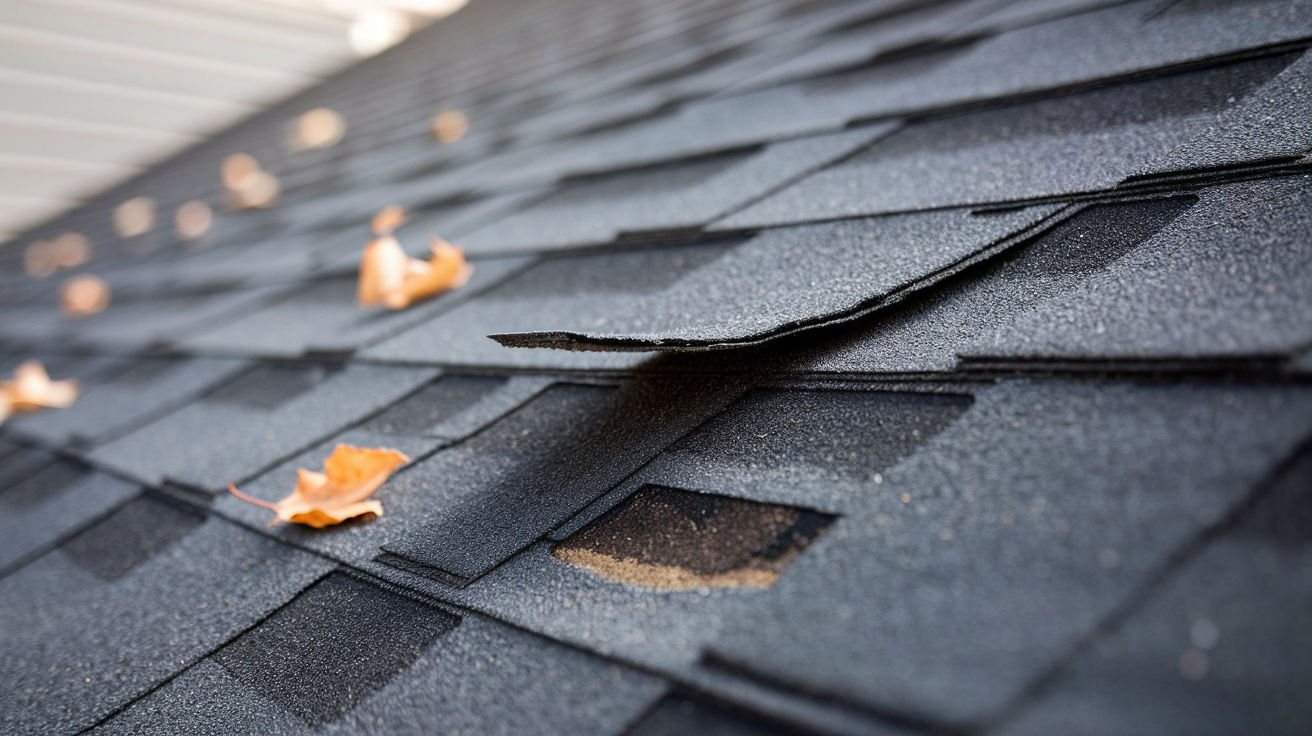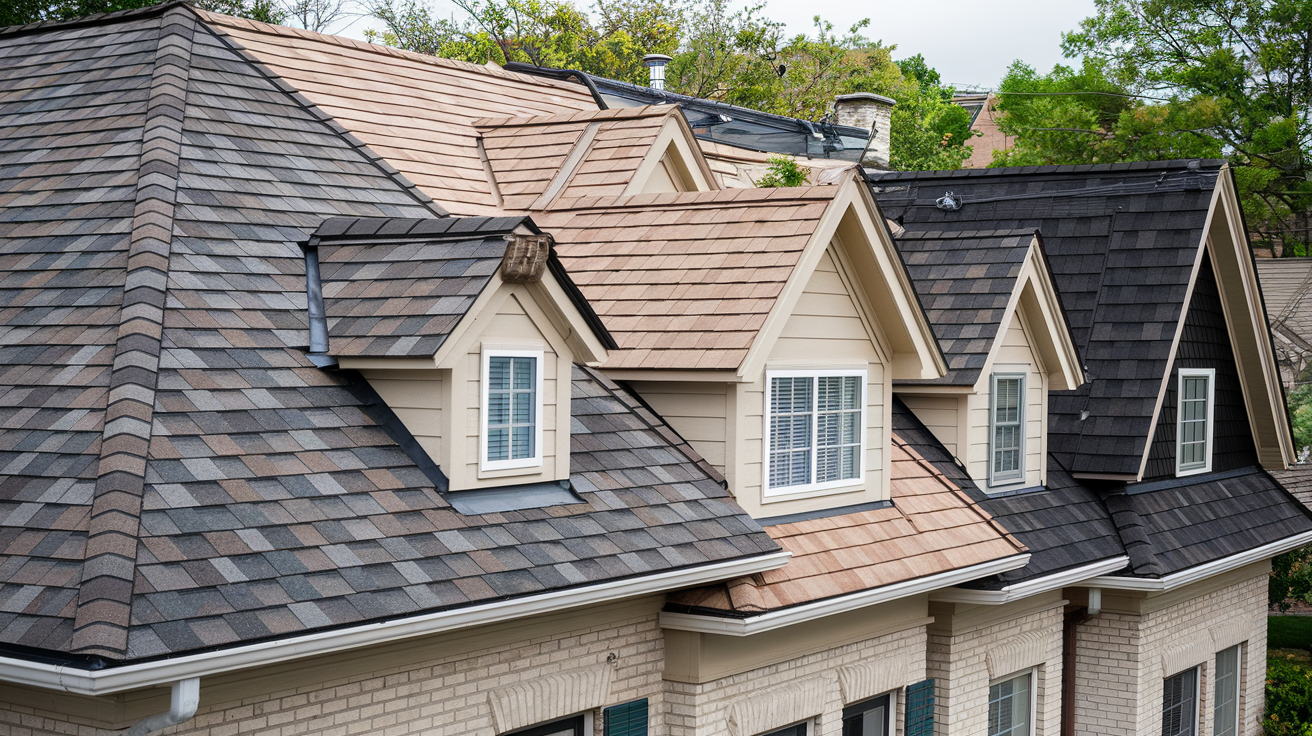Expert Guide: How to Choose the Perfect Shingle Color for Your Home
Is your roof showing signs of wear? You're not alone. With over 5 million homes needing roof replacement each year, choosing the right shingle color has become more critical than ever. While it might seem like a purely aesthetic decision, your shingle color choice can impact everything from your monthly energy bills to your home's resale value.
Today's homeowners face a complex decision when selecting shingle colors. Modern options go far beyond traditional blacks and grays, offering enhanced energy efficiency and durability features. The right choice can reduce cooling costs by up to 20% through better heat reflection, while the wrong choice might lead to premature aging and higher energy bills.
In this comprehensive guide, you'll discover how to select the perfect shingle color for your home. We'll explore how different colors perform in various climates, complement different architectural styles, and affect your home's energy efficiency. You'll learn practical tips for testing samples, working with professionals, and ensuring your choice meets local guidelines while maximizing your investment.
- Understanding the Importance of Shingle Color
- Factors to Consider When Choosing Shingle Color
- Popular Shingle Color Options and Their Benefits
- Climate Considerations for Shingle Longevity and Performance
- Tips for Making the Final Decision
Understanding the Importance of Shingle Color
Choosing the right shingle color is about more than just picking your favorite. It impacts your home's curb appeal, energy efficiency, and even its resale value. This section explains how shingle color affects these important factors.

Impact on Home Aesthetics
Your shingle color drastically affects your home's appearance and style, making it key to boosting curb appeal. Classic colors like black, brown, or gray often work well with traditional homes. For example, a dark brown shingle complements a Tudor-style home, while a light tan suits a Craftsman bungalow. Modern homes can handle bolder, more varied colors for a contemporary feel. Trending colors for 2024 include earth tones, black hues, and cool grays, giving homeowners many options to refresh their exteriors. A trending color like autumn brown, a deep brown with hints of red, can make large houses feel more welcoming. The right shingle color complements your home's architectural style, creating a cohesive and attractive look. Thinking about color beforehand also helps you discuss options with your roofing professional.
Influence on Energy Efficiency
Shingle color also affects your home's energy efficiency. Light colors like beige and light gray reflect sunlight, reducing heat absorption and the need for air conditioning. These colors can lower your roof's surface temperature by up to 50 degrees, saving you energy. While white is most efficient, lighter shades like beige and light gray still offer significant savings. "Cool-colored" shingles reflect more sunlight and absorb less solar energy, typically reflecting 30-60% of sunlight, making them a smart choice for energy-conscious homeowners. This means less heat enters your home, keeping it cooler and potentially lowering your energy bills. Energy-efficient shingle colors increase your comfort, lower your utility bills, and are better for the environment. Consider your local climate and weather patterns, including temperature and sunlight exposure, when choosing a color.
Resale Value Considerations
Shingle color can also impact your home's resale value. A good color scheme boosts your home's curb appeal, making it more attractive to buyers. Homes with appealing exteriors often sell for more. Energy-efficient shingles can also attract environmentally conscious buyers, increasing your home's marketability. Shingle durability is also important. Asphalt shingles, the most common type, last 25-30 years when installed professionally. Their long lifespan, affordability, and aesthetic appeal contribute to their popularity, making up 60% of the residential roofing market. Choosing a shingle color that looks good and performs well can increase your home's value in the long run. Get Your Roof Assessment
Factors to Consider When Choosing Shingle Color
Choosing the right shingle color goes beyond simply picking your favorite. It impacts your home's curb appeal, energy efficiency, and even its value. This section explores key factors to consider when selecting your new roof shingles.

Architectural Style of Your Home
Your home's architectural style is a crucial factor in choosing a shingle color.
Traditional Homes
Traditional homes, like Colonial or Victorian styles, often benefit from classic colors. Blacks, browns, and grays enhance their timeless appeal. For instance, a deep chocolate brown complements a Tudor home, while a desert tan suits a Craftsman bungalow. These classic shingle colors create a sense of history and elegance.
Modern Homes
Modern homes offer more flexibility with shingle colors. Bolder and more varied colors create a vibrant, contemporary look. This could include brighter colors or unique combinations that highlight modern architectural features. Consider the overall impression you want to create.
Local Climate and Weather Patterns
Your local climate significantly impacts your shingle color choice.
Warm Climates
In warmer climates, light-colored shingles are beneficial. They can reflect sunlight and reduce heat absorption by up to 20%, lowering cooling costs. Light hues like beige and light gray are trending for 2024. They also improve energy savings. While white offers the highest energy efficiency, other light colors still provide significant savings. Consider learn more about roof maintenance for optimal performance.
Cool Climates
Darker shingles are often more suitable for cooler climates. They absorb more heat, potentially reducing heating costs in winter. This passive warming can be especially helpful in areas with limited sunlight.
Neighborhood and Community Guidelines
Before choosing your shingle color, check for neighborhood or community guidelines.
Homeowners' Associations (HOAs)
Many HOAs have rules about acceptable roof colors to maintain a uniform neighborhood aesthetic. Ignoring these rules can lead to disputes and potentially require costly changes. You might even incur fines. Check with your HOA early in the planning process to avoid issues. This proactive step ensures your choice complies with community standards.
Cost Implications of Different Colors
Shingle costs vary based on color, materials used, and reflective properties. Standard asphalt shingles are generally cost-effective, representing 60% of the residential roofing market. However, premium colors with reflective properties for energy efficiency can be more expensive.
Balancing Cost and Savings
Balance the initial cost against potential long-term energy savings. Asphalt shingles typically last 25-30 years with professional installation. Light-colored, energy-efficient shingles might cost more upfront but can offer significant long-term savings on cooling expenses. A Get Your Roof Assessment can provide valuable insights into your roofing needs. In conclusion, choosing the right shingle color involves balancing aesthetics, practicality, and budget. Consider your home's architectural style, local climate, community guidelines, and cost implications to make an informed decision. This ensures your new roof enhances your home's appearance and functionality for years to come.
Popular Shingle Color Options and Their Benefits
Choosing the right shingle color goes beyond personal preference. It impacts energy efficiency, curb appeal, and property value. This section explores popular shingle color options and their unique benefits for various climates and architectural styles. Considering these factors helps homeowners make informed decisions that balance aesthetics and practicality. Schedule a Get Your Roof Assessment to determine the best shingle color for your home.
Light-Colored Shingles
Light-colored shingles, like beige, light gray, and white, are known for their energy efficiency. They reflect sunlight, reducing heat absorption by as much as 20%. This results in lower cooling costs, especially in warmer climates.
Benefits of Light-Colored Shingles
- Energy Savings: Less heat transfer means lower air conditioning costs.
- Enhanced Aesthetics: Light hues make homes appear larger and more inviting.
- Variety: While white offers maximum reflectivity, beige and light gray also provide substantial energy savings.
Consider light-colored shingles if you live in a sunny region and want to minimize cooling costs while enhancing your home's appearance. You can learn more about roof maintenance and its impact on energy efficiency.
Dark-Colored Shingles
Dark-colored shingles, such as deep browns and blacks, offer a classic, sophisticated look. They can be beneficial in cooler climates by absorbing heat and potentially reducing heating costs.
Benefits of Dark-Colored Shingles
- Classic Look: Dark shingles offer a timeless and elegant aesthetic.
- Heat Absorption: They absorb heat, which can be helpful in colder climates.
- Conceals Imperfections: Darker colors tend to hide minor roof imperfections.
However, dark shingles can increase cooling costs in warmer climates if insulation is inadequate. Careful consideration is necessary in warmer regions.
Earth-Toned Shingles
Earth-toned shingles, including browns, tans, and muted greens, provide a versatile, natural look. These colors are currently trending, reflecting a growing preference for organic design.
Benefits of Earth-Toned Shingles
- Natural Aesthetic: Earth tones blend seamlessly with natural surroundings.
- Timeless Appeal: They offer a classic look that enhances resale value.
- Balanced Energy Efficiency: They absorb less heat than dark shingles but more than light ones.
Earth tones are an excellent choice for homeowners seeking a balance between aesthetics and energy efficiency.
Regional Color Trends and Preferences
Regional climate and architectural styles significantly influence shingle color choices. In hot climates, lighter colors are favored for their reflectivity and energy efficiency. Conversely, darker shingles are more common in colder regions due to their heat retention properties.
Factors Influencing Color Choice
- Climate: Hotter climates favor lighter colors; colder climates often utilize darker shades.
- Architectural Style: Color choices should complement the home's architectural design.
- Regional Trends: Local trends and cultural preferences impact popular color choices.
Industry data shows regional roofing trends vary. Researching local trends ensures your choice aligns with community norms and expectations. For instance, black and cool grays are trending in urban areas, while earth tones prevail in suburban and rural settings.
Climate Considerations for Shingle Longevity and Performance
Choosing the right shingles involves carefully considering your local climate. Different climates present unique challenges that can affect how long your roof lasts and how well it protects your home. Factors like temperature changes, sunlight, and moisture all play a role in shingle durability. This section explains how different climates impact shingle longevity and performance, helping you choose the best shingles for your house.

Hot and Sunny Climates
In hot, sunny climates, managing heat absorption is key for keeping your home cool. Shingles that reflect sunlight are essential. Light colors like white, beige, or light gray can reflect up to 20% more sunlight than darker colors, reducing heat absorption and improving energy efficiency. This can lead to lower cooling bills in the summer. UV-resistant shingles are also important, as prolonged sun exposure can damage shingles over time. If you prefer darker shingles, consider lighter shades like beige or light gray, which still offer good energy savings compared to darker options.
Importance of UV Resistance
UV rays can degrade roofing materials, leading to a shorter lifespan. Choosing UV-resistant shingles helps protect your investment and ensures long-term performance in sunny climates. Consider Get Your Roof Assessment to evaluate your current roof's condition and determine the best shingle options for your climate.
Cold and Snowy Climates
Cold and snowy climates require shingles that can handle freezing temperatures and the weight of snow. Durability and insulation are crucial. Shingles should resist moisture and freeze-thaw cycles to prevent ice dams and water damage.
Preventing Ice Dams
Ice dams form when snow melts on the roof and refreezes at the edges, potentially causing leaks. Asphalt shingles, lasting 15-30 years, are a common choice for cold climates due to their ability to handle temperature changes. For enhanced durability, consider 30-year shingles, which offer a longer lifespan and better resilience than 20-year shingles.
Attic Ventilation
Proper attic ventilation is important in cold climates. Studies show poor ventilation can reduce shingle life by one to two years. Learn more about roof maintenance to understand the importance of ventilation. While not always required, proper ventilation helps prevent premature shingle aging and is generally recommended.
Humid Coastal Environments
Humid coastal areas present challenges like salt air, high humidity, and storms. Shingles must resist moisture and corrosion to prevent mold, mildew, and algae growth. Constant moisture can encourage mold and mildew, harming both the look and structure of your roof. This can lead to discoloration, staining, and faster shingle deterioration. Metal shingles, lasting up to 70 years, are a popular option for coastal areas due to their rust and corrosion resistance. They are particularly well-suited to handle the corrosive effects of salt air.
Alternative Roofing Materials
While asphalt shingles are common, they may not last as long in coastal climates (15-30 years) compared to metal (40-70 years), tile (50-100 years), or wood shingles (25-30 years). Shingles with algae resistance can help maintain your roof's appearance and prevent those unsightly black streaks.
Impact of Wind and Hail
Wind and hail can severely damage shingles, particularly in storm-prone areas. Damage can range from minor granule loss and cracks to complete shingle detachment, resulting in leaks and costly repairs. High wind-resistant shingles are important to prevent shingles from blowing off during storms.
Impact-Resistant Shingles
Impact-resistant shingles are designed to withstand hail, minimizing damage and extending roof life. If your area experiences frequent hail, these shingles offer valuable protection. Choosing these features can save you money on repairs and maintain your roof's protection. Shingle roofs typically cost between $4 and $6 per square foot, including materials and installation. In conclusion, choosing the right shingles for your climate is vital for a long-lasting, effective roof. Consider your local weather, including temperature, rain, snow, and the risk of severe weather like hail and high winds, when making your decision.
Tips for Making the Final Decision
Choosing the right shingle color can feel overwhelming. But a step-by-step approach makes it easier. Think about the local climate, your home's style, and what's common in your neighborhood. This guide helps you choose shingles that look great and last a long time.
Sampling and Testing Shingle Colors
Before you decide on a color, see how it looks in different light. Sunlight and indoor lights can make colors look very different. Get samples of your favorite colors and put them on your roof. Look at them at different times of day.
Testing Shingle Placement
Place samples on different parts of your roof. See how the color changes in sun and shade. Think about how the shingles look with your home's brick, siding, or landscaping. Testing samples prevents surprises and helps you find shingles that improve your home's appearance. For example, brown shingles come in many shades. Deep chocolate brown looks great on Tudor-style homes. A lighter desert tan works well with Craftsman bungalows.
Consulting with Professionals
Roofing experts can give you helpful advice. They know a lot about current trends, like the increasing popularity of earth tones, black hues, and cool grays. They can also tell you about energy efficiency and durability. Get Your Roof Assessment from qualified professionals to assist you in making informed decisions.
Professional Advice on Energy Efficiency and Durability
Lighter shades can reflect sunlight and lower your energy bills. Darker shades might be better in colder climates. Professionals can help you find shingles that last. 30-year shingles are more durable and last longer than 20-year shingles. They can handle wear and tear for a longer time. Professionals also make sure your shingles follow local building codes. To learn more about roof maintenance and shingle selection, consult with a professional roofer.
Considering Long-Term Maintenance and Durability
Think about how easy the shingles will be to care for and how long they'll last. Some colors and materials need more cleaning or repairs. This can impact how they look over time.
Maintenance of Different Shingle Colors
Light-colored shingles might show dirt and algae more easily. But they can also save you energy. Lighter colors reflect more sunlight. This can lower roof temperatures by up to 50 degrees and reduce the need for air conditioning. This can mean lower energy bills. Darker shingles might hide stains better. But they can absorb more heat and wear out faster in hot climates.
Durability of Darker Shingles
Asphalt shingles usually last 20-30 years. Darker colors might not last as long in very hot areas. This is because they absorb more heat. Think about these things when choosing your shingle color. Regular cleaning and inspections can help your shingles last longer.
Aligning with Regional and Community Standards
Your shingle color should fit in with your neighborhood. Many areas have rules about house colors. These rules create a consistent look.
Checking Community Guidelines
Check your community's rules before choosing your shingles. This can save you from having to make costly changes later. Also, consider your local climate. In sunny areas, lighter, reflective shingles might be better. In colder areas, darker colors can help keep your house warm.
Choosing Colors Based on Home Style
Traditional homes often look good with classic colors like black, brown, or gray. Modern homes can use bolder colors. Think about the local weather too. Choosing the right shingle color means thinking about things like temperature and sunlight. In hot climates, lighter colors are usually better because they reflect sunlight.
Disclaimer: This blog post is intended for informational purposes only and should not be considered professional roofing advice. Always consult with qualified roofing contractors and insurance professionals for specific guidance regarding your individual circumstances.
